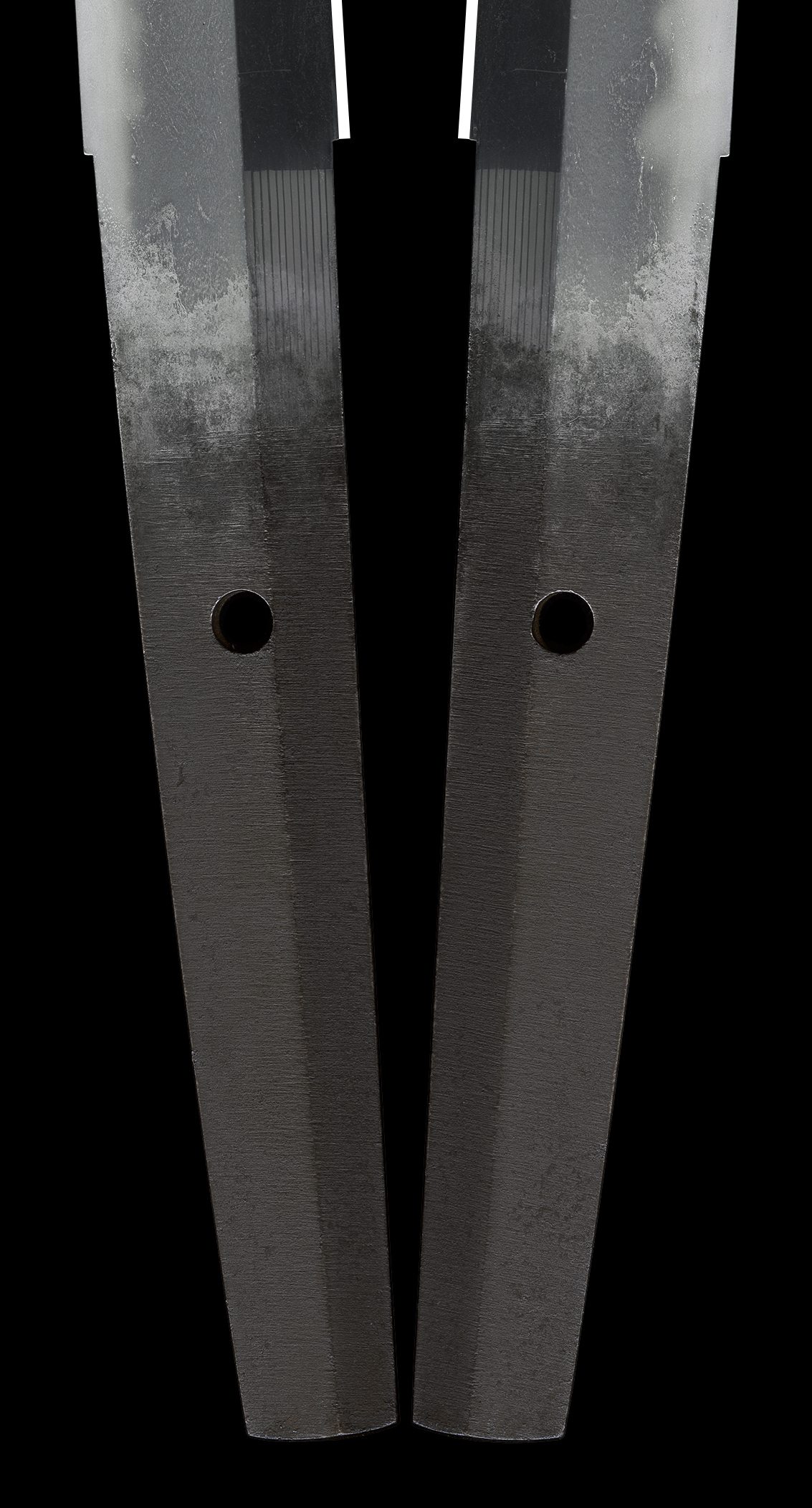Previous answer is
Mumei(judged by NBTHK as Katayama Ichimonji)無銘(片山一文字)
Special feature: This work used to have Origami written in Kyoho 16. It was once judged as Bizen Osafune Nagamori, but NBTHK judged as Katayama Ichimonji. Origami is lost, but it is written on registration card.(We will return the card at the time of exporting, but we will give you a copy if you want to have one.) Our description will be written according to NBTHK’s judgement. Katayama Ichimonji school is said to have flourished after Norifusa, a swordsmith from Fukuoka Ichimonji school, moved to Katayama. Up to now, it was normal to regard the place “Katayama” as in Bicchu Kuni, but now many people think that it must have been Katayama near Bizen Kuni, Fukuoka. There is a room for research. High spot of the school is that Jigane is strong and bright, Chojimidare has relatively smaller patterns than Fukuoka Ichimonji, Midare is upside-down like Aoe, and Ashi in Hachu is short.
==============================================
Appraisal Quiz #700 (July 16th, 2022)
Who made this sword do you think ?
==============================================
Blade length : 67.6cm or 26.61inches.
Sori :1.82 cm or 0.71inches.
Mekugi : 1
Width at the hamachi : 3.22 cm or 1.26inches.
Width at the Kissaki : 2.15cm or 0.84inches.
Kasane : 0.67 cm or 0.26inches.
The weight of the sword: 766 grams
Shape: The blade is broad and thick with deep Sori and slightly longer Kissaki. Well-shaped work.
Jigane: Koitamehada is black and well-grained and becomes fine. Elaborate jigane.
Hamon: Niedeki, Gunomemidare with deep Nioikuchi. The blade is bright with active Sunagashi and Kinsuji. Boshi is complex Hakikake.
================================================
Answer will be posted at next Appraisal Quiz.
================================================
(Please acknowledge not replying to mail about Appraisal Quiz by our convenience.)


